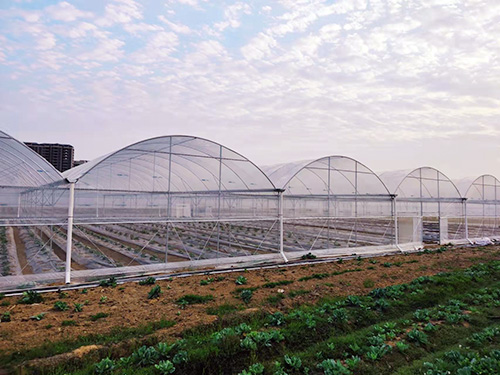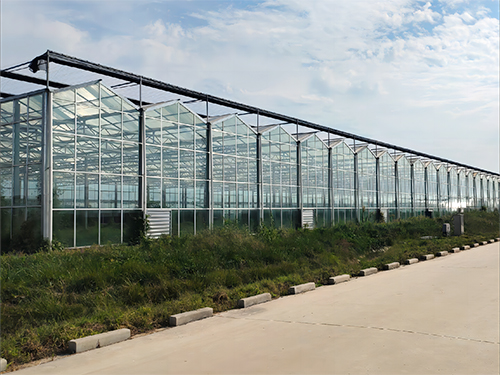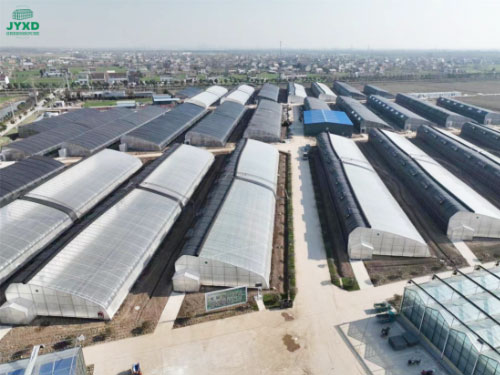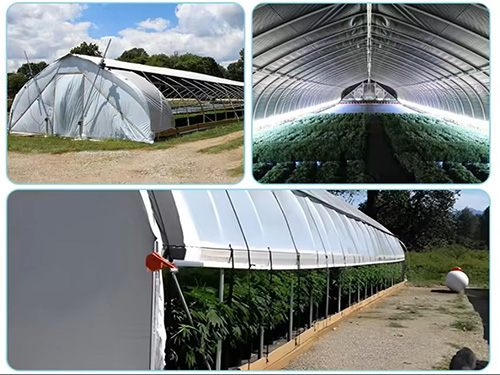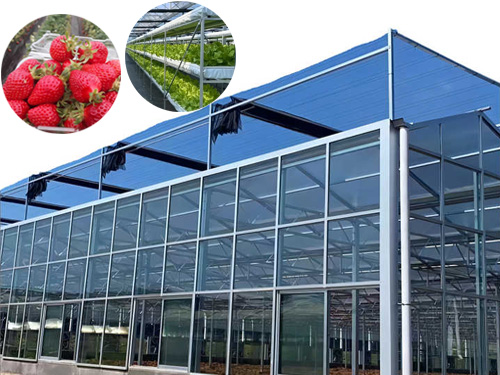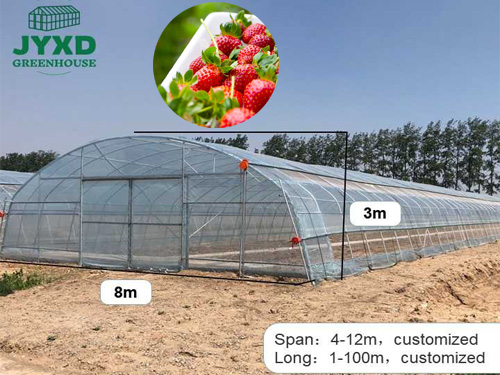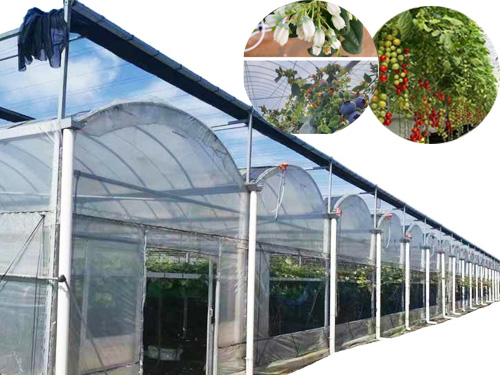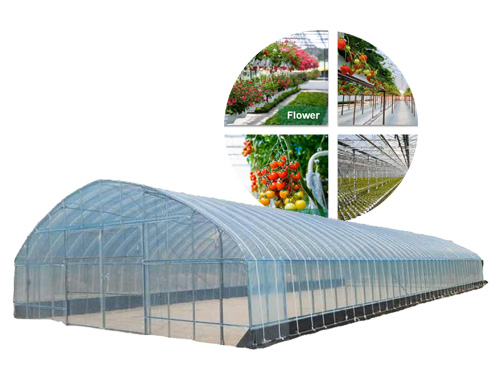NEWS DETAILS
NEWS INFORMATION
Greenhouse Vegetable Cultivation: How to Optimize Production to Meet Market Demand
AUTHOR:jyxd-greenhouse DATE:2024-11-22 19:28:14 HITS:92
As consumer demand for high-quality vegetables grows, greenhouse vegetable cultivation has become an essential production method in modern agriculture. Greenhouse farming not only increases crop yields but also reduces the impact of environmental factors on vegetable growth, making it a more efficient and sustainable way to meet market needs. This article will explore how to optimize greenhouse vegetable cultivation from four key aspects: market demand analysis, cultivation technology optimization, production management, and sales strategies.
1. Market Demand Analysis: Identifying the Planting Direction
To meet market demand, it is essential to understand which vegetable varieties are most popular in the market. Through market demand analysis, growers can make targeted selections, reducing production risks and enhancing market competitiveness.
Seasonal Demand: Different seasons have varying vegetable demands. Greenhouse cultivation can extend the supply cycle of off-season vegetables, such as growing cucumbers and tomatoes, typically available in summer, during the winter months to meet seasonal demand.
Health Trends: In recent years, consumers are increasingly focused on organic and pesticide-free vegetables. Greenhouse growers can introduce pesticideand chemical-free organic farming methods to improve product value.
Customized Demand: Some catering companies or food processing businesses require specific vegetable varieties. Growers can collaborate with these enterprises to provide customized vegetables, such as those of specific sizes or nutritional content.
Keywords: Greenhouse Vegetable Cultivation, Market Demand Analysis
2. Optimizing Greenhouse Cultivation Techniques: Improving Yield and Quality
To achieve efficient cultivation in greenhouses, optimizing cultivation techniques is crucial. Scientific farming methods and intelligent equipment can significantly enhance both the yield and quality of vegetables.
a) Integrated Water and Fertilizer Management
The integrated water and fertilizer system allows for precise moisture and nutrient management. Through drip irrigation and irrigation systems, water and fertilizer can be evenly distributed to each plant's roots, promoting healthy growth and reducing waste.
Drip Irrigation: Suitable for precise irrigation in greenhouse vegetable farming, allowing for adjustment of water and fertilizer ratios according to crop needs, thus improving fertilizer utilization.
Nutrient Monitoring: Sensors monitor the nutrient levels in the soil, adjusting fertilizer amounts in real-time to prevent over-fertilization and soil pollution.
b) Supplementary Lighting
In seasons with insufficient sunlight, proper supplementary lighting can effectively extend the plants' photosynthesis duration, accelerating growth and improving yield.
LED Lights: LED lights provide the blue and red light necessary for plant growth, offering different spectra at various stages to promote better leaf and fruit development.
Lighting Time Management: Automatic control systems can set daily light hours, ensuring plants receive adequate light and improving planting efficiency.
c) Temperature and Humidity Control
Temperature and humidity directly affect plant growth, and automated temperature and humidity control systems can adjust greenhouse climate conditions in real-time, providing the optimal environment.
Temperature and Humidity Monitoring Systems: Sensors track changes in temperature and humidity, automatically adjusting fans and wet curtains to maintain conditions within the ideal range for plant growth.
Pest and Disease Control: Controlling temperature and humidity not only promotes plant growth but also reduces the risk of pests and diseases. Excessive humidity in the greenhouse increases the risk of pests, so it must be properly controlled.
Keywords: Integrated Water and Fertilizer Management, LED Lighting, Temperature and Humidity Control
3. Fine-Tuned Management: Optimizing the Production Process
Optimizing the production process is vital for efficient greenhouse vegetable cultivation, and fine-tuned management is key to increasing yield and controlling costs.
a) Regular Soil and Plant Testing
Soil and plant testing helps greenhouse managers understand the nutrient status of the plants, allowing timely adjustments to water and fertilizer supply.
Soil Testing: Regular testing of soil pH and nutrient levels helps create a rational fertilization plan, avoiding nutrient wastage due to over-fertilization.
Leaf Analysis: Leaf analysis helps detect deficiencies in trace elements, allowing targeted supplementation to ensure plant health.
b) Automated Irrigation and Fertilization Systems
Automated irrigation and fertilization systems reduce labor and ensure uniform water and nutrient supply for plants. Systematic management increases production efficiency and reduces planting costs.
c) Pest and Disease Monitoring and Prevention
Pest and disease prevention in greenhouses requires early intervention to minimize pesticide use. Through intelligent monitoring devices, pests and diseases can be detected early, allowing for timely intervention.
Biological Control: Using beneficial organisms like predatory insects to control pests, reducing pesticide use and improving vegetable safety.
Preventive Measures: Controlling humidity and ventilation in the greenhouse can reduce the environment conducive to pathogen and pest growth, minimizing the occurrence of pests and diseases.
Keywords: Fine-Tuned Management, Automated Irrigation, Pest and Disease Prevention
4. Sales Strategies: Expanding Market Share
While optimizing production, growers must also develop effective sales strategies to expand market share and increase revenue.
a) Regular Collaboration with Retailers and Catering Enterprises
Collaborating with supermarkets and catering businesses can stabilize vegetable sales channels. For example, providing customized vegetables to catering businesses based on their needs or supplying fresh vegetables to supermarkets ensures broad market coverage.
b) Expanding Online Sales Platforms
Using e-commerce platforms and social media for online sales can attract more consumers. Especially after the pandemic, consumer demand for online purchases of agricultural products has increased, and greenhouse vegetable growers can seize this opportunity to boost sales.
c) Building Brand Advantage
Branding efforts help consumers recognize the quality of greenhouse vegetables. Social media can be used to showcase the greenhouse farming process, increasing consumer trust. Additionally, packaging can highlight the origin and cultivation methods of the vegetables, adding premium value to the product.
Keywords: Vegetable Sales Strategies, Online Sales, Brand Building
5. Sustainable Greenhouse Practices
The market's demand for sustainable and environmentally-friendly vegetables is on the rise. Greenhouse vegetable growers can attract more environmentally-conscious consumers by implementing sustainable farming practices.
Water-Saving Irrigation: Drip irrigation systems and rainwater collection reduce water waste.
Organic Fertilizers: Using organic fertilizers and bio-fertilizers instead of chemical fertilizers helps reduce soil pollution.
Reduced Pesticide Use: Pest control through physical and biological methods minimizes pesticide use and improves vegetable quality.
These sustainable practices not only help protect the environment but also enhance the market competitiveness of greenhouse vegetables.
Keywords: Sustainable Farming, Water-Saving Irrigation, Organic Fertilizers
Conclusion
Optimizing greenhouse vegetable cultivation can not only improve production efficiency but also meet the growing market demand for high-quality vegetables. Through market demand analysis, optimizing cultivation techniques, fine-tuned management, and effective sales strategies, greenhouse growers can stand out in the competitive market. With advancements in technology and increasing consumer focus on environmental concerns, sustainable development in greenhouse farming will become a trend, providing growers with more market opportunities and growth space.
Hebei Juyou Xinda Greenhouse Facilities Co.,Ltd.
Copyright © 2024-2025 https://www.jyxd-greenhouse.com. All Rights Reserved Hebei Juyou Xinda Greenhouse Facilities Co.,Ltd.Copyright





 Current Location:
Current Location: